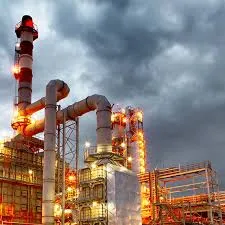
ডিসে. . 24, 2024 23:48 Back to list
Understanding the Components and Functionality of a Steam Boiler System
The Anatomy of a Steam Boiler Understanding Its Functionality and Components
A steam boiler is a crucial component in various industries, serving as an essential device for heating and generating steam. Understanding its anatomy helps in appreciating how it functions and its significance in industrial applications. This article will delve into the components of a steam boiler, its operation, and the roles each part plays in steam generation.
At its core, a steam boiler consists of several key components, including the boiler shell, burners, heat exchangers, feed water system, steam separators, and safety mechanisms. Each of these parts contributes to the efficient and safe operation of the boiler, ensuring it meets the required steam generation capacity.
Boiler Shell
The boiler shell is the outer structure that encases the internal components. It is typically made of thick steel or iron to withstand high-pressure conditions. The primary function of the shell is to contain the water and steam within, providing insulation to reduce heat loss and ensuring the surface operates under controlled conditions. The design of the shell is critical; it needs to be robust enough to handle the extreme temperatures and pressures encountered during operation.
Burners
The burners are responsible for generating the heat necessary for steam production. They achieve this by burning fuel—whether it be natural gas, oil, or coal—and converting it into thermal energy. The efficiency of the burning process is vital, as it directly impacts the overall efficiency of the steam boiler. Burners can be designed for specific types of fuel, and advanced burners utilize technology to optimize combustion while reducing harmful emissions.
Heat Exchangers
Heat exchangers play a crucial role in transferring the thermal energy from the burning fuel to the water in the boiler. Within the boiler, hot gases generated by fuel combustion flow through the heat exchangers, heating the water surrounding them. This process is essential, as it facilitates the formation of steam without the need for direct flame contact, which could lead to dangerous conditions. The design and materials used in heat exchangers are optimized for maximum thermal efficiency and durability.
diagram of steam boiler

Feed Water System
The feed water system supplies water to the boiler. It ensures that the boiler maintains a consistent water level, which is vital for safe and efficient operation. The system is equipped with pumps, tanks, and valves that control the flow of feed water into the boiler. It also includes treatment systems designed to purify the water, remove impurities, and prevent scaling on the internal surfaces of the boiler. Good water quality is crucial in preventing corrosion and extending the boiler’s lifespan.
Steam Separators
Once water is heated and converted into steam, it needs to be separated from any residual water droplets. Steam separators are designed to achieve this separation, ensuring that only pure steam is directed toward the intended applications, such as powering turbines or providing heat for industrial processes. Effective steam separation minimizes the risk of water carryover, which can damage equipment downstream.
Safety Mechanisms
Safety is paramount in boiler operation. Various safety mechanisms are incorporated to prevent accidents, including pressure relief valves, water level sensors, and alarm systems. Pressure relief valves automatically release excess pressure, protecting the boiler from potential explosion risks. Water level sensors monitor the water level inside the boiler, ensuring that it remains within safe limits. If the water level falls too low, alarms alert operators to take corrective action immediately.
Conclusion
A steam boiler operates as a complex system involving numerous interdependent components, each playing a vital role in its overall efficiency and safety. By understanding the anatomy of a steam boiler, operators and engineers can better manage its operation, ensure compliance with safety regulations, and optimize performance. As industries continue to evolve, so too will the technology and design of steam boilers, making them an enduring element of industrial processes. Proper knowledge and maintenance of these systems will maximize their longevity and performance, cementing their place in modern industry.
-
Best Steam Boiler Design PDF Free Design Calculation & Diagram Downloads
NewsJun.10,2025
-
Hot Boiler Water Heater Efficient Heating Solutions for Home & Commercial Use
NewsJun.10,2025
-
Steam Boiler Safety Devices High-Quality Protection Valves
NewsJun.10,2025
-
Ultimate Steam Boiler Checklist for Safety & Efficiency
NewsJun.10,2025
-
Optimal Hot Water Boiler Temperature Setting Guide
NewsJun.10,2025
-
Effective Hot Water Boiler Chemical Treatment Protect & Maintain
NewsJun.09,2025
Related PRODUCTS






















